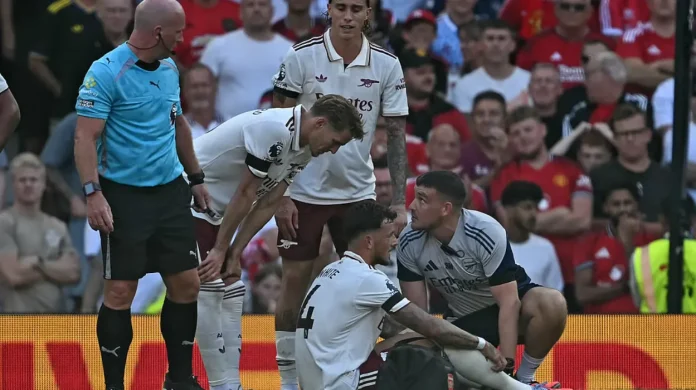The 2025 FIFA Club World Cup, redesigned as a 32-team mega-event, and to be hosted by the United States between June and July, has once again brought up the question of the extent to which modern football places demands on its players.
As the calendar of fixtures has become saturated, with elite athletes recording excessive minutes in competing leagues, the tournament has become a new point of a debate around the world regarding workloads and risk of injuries and the sustainability of the career in the long term. The physical demands of elite football have become drastically high and people are now wondering whether the game has grown at an unreasonable human price.
The expanding Club World Cup and rising player workload
FIFA’s decision to expand the Club World Cup into a full-scale global spectacle significantly adds to an already congested football calendar. Held immediately after a taxing season for most European and South American players, the tournament has compressed vital recovery time, leaving players vulnerable to overuse and fatigue-related injuries.
Workload data from top European clubs
According to the 2025 FIFPRO Player Workload Monitoring platform, elite players were entering the Club World Cup with dangerously high minute totals. Benfica’s Kerem Akturkoglu had recorded 55 appearances by early April, while Luka Modric and Julian Alvarez exceeded 50 matches in the same timeframe. Real Madrid’s Federico Valverde was projected to reach nearly 7,000 minutes of football by season’s end equal to around 65 full matches with minimal recovery intervals between fixtures.
What stands out is the dramatic reduction in rest time. Less than 13 percent of players who participated in Euro 2024 or Copa America received the minimum 28-day off-season break recommended by sports medicine experts. The physical and cognitive recovery that players rely on has effectively been removed from the professional cycle, leaving bodies and minds in a perpetual state of exertion.
Tournament timing and its compounding effects
With the 2025 Club World Cup slotted just days after the conclusion of major league seasons, it effectively erased what little offseason existed. For athletes already at risk due to cumulative workloads, the additional tournament load has intensified physical strain, placing stress on soft tissue, cardiovascular capacity, and even mental focus.
Medical practitioners within clubs have raised alarm over the potential long-term damage. Club doctors from Premier League and La Liga teams reported increased occurrences of minor muscular injuries, fatigue-induced decision-making errors, and longer recovery periods after matches, a trend strongly correlated with fixture congestion.
Calendar congestion and its physical toll
Competitors in club, continental, and international club competitions are currently averaging more than 60 matches a year. Although a lucrative venture to the organization and the broadcasters, this trend is becoming more dangerous to the athletes who are the focus of the show.
Champions League overlap and travel fatigue
In 2025, Paris Saint-Germain Ousmane Dembele and Vitinha became members of the Club World Cup just less than two weeks after winning the champions league. Marc Cucurella of Chelsea had broken the record of 66 games in a period of a little more than 13 months. These sportsmen had minimal or no rest between the matches and the travelling over time zones complicated the process of recovery and preparation.
The toll is not merely theoretical. Increased rates of hamstring injuries, ligament tears, and chronic stress conditions have been observed by club medical teams. Studies conducted by UEFA’s medical committee show that players exposed to more than 50 matches annually face a 30% higher risk of moderate to severe injury compared to those with fewer appearances.
Mental fatigue and cognitive load
In addition to physical exhaustion, the psychological pressure of the high-performance level is indescribable. The sports psychologists operating in the national teams, and club academies claim an increasing number of emotional burnouts and reduced motivation, as well as more frequent utilization of psychological assistance. The expected performance of athletes is at the highest level when they operate under constant travel, media attention, and the limited time.
The expansionist plan of FIFA, though meant to globalize the sport further, has put an unsurpassed mental strain on the players whose mental and tactical awareness directly depends on how quickly they can recover.
Safeguards and player welfare proposals
The warnings issued by medical professionals and player unions have become more insistent in recent years, yet the regulatory structures of global football have not evolved at the same pace. FIFPRO has emerged as a leading voice in advocating for standardized protections.
Recommendations for rest and workload control
FIFPRO’s medical experts recommend mandatory off-seasons of at least 28 days and mid-season rest breaks to allow for musculoskeletal repair and cognitive reset. The group also calls for cap limits on travel mileage and minutes played across competitions, arguing that player health must be recognized as a non-negotiable occupational right.
Dr. Vincent Gouttebarge, FIFPRO’s Medical Director, emphasized that “the current demands placed on players are incompatible with established principles of human performance and occupational health.” Dr. Darren Burgess, chair of the High-Performance Advisory Network, added that “ignoring these standards threatens the game’s core, its athletes.”
Institutional response and implementation gaps
Despite these warnings, FIFA has not implemented uniform rest standards or restricted match volumes. The organization maintains that clubs and national associations bear responsibility for managing player health, a position critics say diffuses accountability.
Some domestic leagues, such as the Bundesliga, have taken independent steps by shortening domestic cup rounds and modifying travel policies. However, without central coordination from governing bodies, inconsistencies remain that compromise player welfare.
Fan engagement and popularity challenges
While the tournament has achieved some commercial milestones, its popularity among fans has not matched FIFA’s expectations. The group stage of the 2025 Club World Cup recorded just 56.7% average stadium capacity, an underwhelming turnout given the profile of teams involved.
This disconnect raises questions about whether fans are overexposed to elite football or fatigued by the abundance of tournaments. Interviews conducted by European fan associations revealed a growing sentiment that football has become “excessive,” losing its traditional rhythm in pursuit of continuous monetization.
TV ratings in key markets like Germany and Brazil declined year-over-year during the Club World Cup group stage, further suggesting that expanding the tournament may not deliver proportional increases in engagement.
A turning point for football governance?
As the 2025 FIFA Club World Cup concludes, it leaves behind a complex legacy: one of sporting achievement shadowed by mounting concerns over player exhaustion. While FIFA celebrates a new chapter in global football, experts caution that the system sustaining it may be approaching critical limits.
Without substantive reform to manage workload, implement rest standards, and centralize player health policy, football’s future may be shaped less by its star performances and more by its injured absences. The game’s stakeholders governing bodies, leagues, clubs, unions, and fans now face a defining decision about the sport’s sustainability.
The consequences of inaction could reach beyond careers into the fabric of football culture itself. Whether reforms will be adopted or postponed will define whether the 2025 Club World Cup becomes a warning sign or a turning point for protecting the athletes who make the sport possible.












